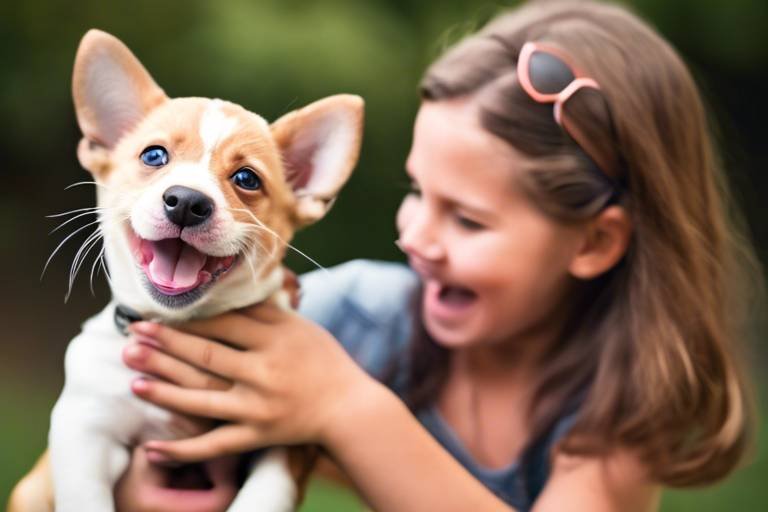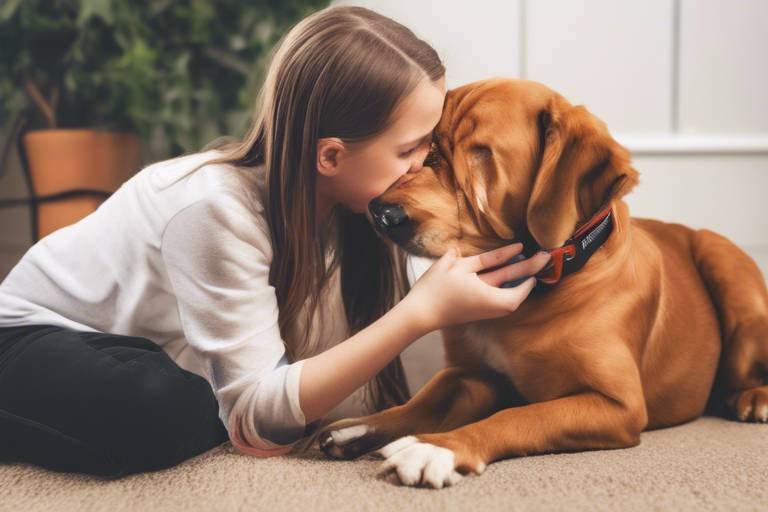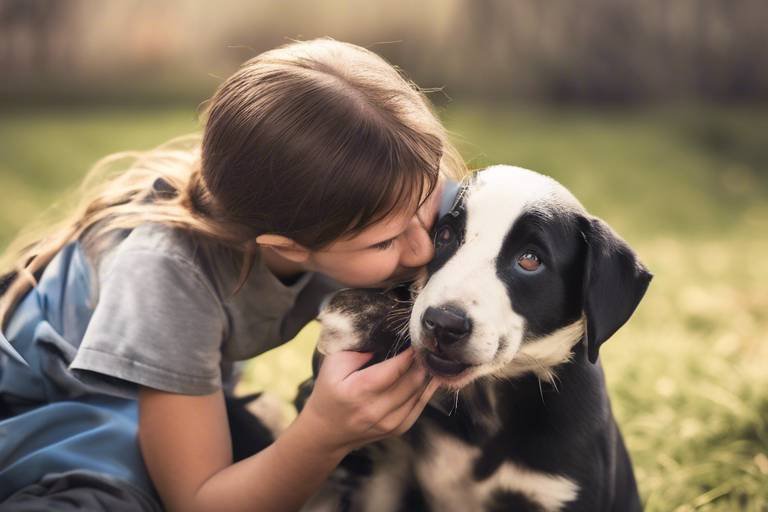How to Get Involved in Your Local Animal Rescue Community
Are you looking to make a difference in the lives of animals in need? Getting involved in your local animal rescue community is not just a rewarding experience; it’s a chance to become a part of something bigger than yourself. Imagine walking through a shelter and seeing the hopeful eyes of a dog or cat waiting for a loving home. By engaging with these organizations, you can be the bridge that connects these animals with their forever families. In this article, we’ll explore various ways you can participate—whether it’s through volunteering, fostering, fundraising, or advocacy. No matter your skills or interests, there’s a role for you in the animal rescue community.
Animal rescue organizations play a crucial role in the welfare of pets and wildlife alike. Every year, millions of animals end up in shelters due to abandonment, abuse, or simply because their previous owners could no longer care for them. These organizations not only provide a safe haven for these animals but also work tirelessly to find them new homes. However, they face numerous challenges, including limited funding, overcrowding, and the constant need for volunteers. This is where community involvement becomes essential. Your participation can help alleviate some of these challenges and ensure that these organizations can continue their vital work.
Volunteering at a local animal rescue is one of the most impactful ways to contribute. There are numerous roles available that cater to different interests and skill sets. From hands-on animal care to administrative support, your time and effort can make a significant difference. Imagine spending your weekends playing with puppies, helping them become more socialized and ready for adoption. Or perhaps you prefer working behind the scenes, where you can assist with data entry, outreach, and event planning. Regardless of your preference, there’s a niche for everyone!
When you volunteer for direct animal care, you’ll be responsible for tasks that directly impact the well-being of the animals. This includes feeding, grooming, and socializing them. Each of these responsibilities is vital for preparing animals for adoption. For instance, spending time with a shy cat can help it become more comfortable around people, increasing its chances of finding a home. Not only will you be helping these animals, but you’ll also gain a wealth of experience and knowledge about animal behavior.
Fostering is another fantastic way to get involved. By providing a temporary home for animals, you help them adjust to family life and prepare them for adoption. The fostering process typically involves a few steps, including an application, home check, and training. Once you’re approved, you can welcome a furry friend into your home! This not only benefits the animal but also gives you a chance to experience the joy of having a pet without a long-term commitment. Plus, you’ll be giving that animal a much-needed break from the shelter environment.
Administrative roles in animal rescue organizations are just as crucial as hands-on care. If you have skills in organization or communication, consider helping with tasks like data entry, outreach, and fundraising efforts. These roles ensure that the rescue operates smoothly and efficiently. For example, by organizing fundraising events, you can help raise the necessary funds to support the shelter’s operations. Every bit of help counts, and your contributions can lead to significant changes in the lives of many animals.
Participating in or organizing fundraising events is a fantastic way to support local animal rescues. Whether it’s a bake sale, a charity run, or an adoption event, these gatherings not only raise funds but also increase awareness about animal welfare. Think about how much fun it would be to host a pet costume contest or a community yard sale where all proceeds go to the shelter! These events can also foster a sense of community among animal lovers, creating a supportive network for ongoing rescue efforts.
Advocating for animal welfare in your community is another powerful way to get involved. Education is key; by informing others about the importance of animal rescue and responsible pet ownership, you can help foster a culture of compassion. This can be done through workshops, social media campaigns, or even casual conversations with friends and family. The more people understand the challenges faced by animals in shelters, the more likely they are to support rescue efforts.
Engaging with schools and community groups can be an effective way to spread awareness about animal welfare issues. By organizing educational programs, you can teach children and adults alike about responsible pet ownership, the importance of spaying and neutering, and the joy of adopting rather than shopping for pets. Imagine the impact of inspiring a whole generation to care for animals and advocate for their rights!
Partnering with local authorities can enhance animal protection laws and initiatives. If you’re passionate about advocacy, consider reaching out to your local government representatives to discuss ways to improve animal welfare in your community. This could include proposing new ordinances that protect animals or collaborating on community outreach programs. Your voice can be a powerful tool in creating positive change!
Creating connections with fellow animal lovers and organizations can amplify your impact. Networking is essential in the rescue community; by collaborating with others, you can share resources, ideas, and support. Attend local meetings, join online forums, or volunteer at events to meet like-minded individuals who share your passion for animal welfare. Together, you can create a stronger, more effective community dedicated to rescuing and caring for animals in need.
Q: How can I find local animal rescue organizations?
A: You can search online for local shelters or rescue groups, check social media platforms, or visit community centers for information.
Q: Do I need special skills to volunteer?
A: No special skills are required! Many organizations provide training, and your enthusiasm and willingness to help are what matter most.
Q: Can I foster if I have pets already?
A: Yes! Many foster programs allow you to foster animals even if you have pets, but it’s important to ensure that all animals in your home are compatible.
Q: What types of fundraising events can I organize?
A: You can organize bake sales, pet wash stations, charity runs, or even online crowdfunding campaigns to support local rescues.

Understanding the Need for Animal Rescue
When we think about animal rescue, it’s easy to picture adorable puppies and kittens waiting for their forever homes. However, the reality is much more complex and urgent. Animal rescue organizations play a critical role in addressing the overwhelming number of abandoned, abused, and neglected animals. Every year, millions of animals find themselves in dire situations, and the need for community involvement has never been greater. Why do we need to care? Because these organizations are often the last line of defense for animals who have nowhere else to turn.
Animal shelters and rescue groups face numerous challenges, including limited funding, insufficient resources, and a constant influx of animals needing care. The statistics can be staggering; for instance, according to the ASPCA, approximately 6.3 million animals enter U.S. shelters every year. This figure highlights the urgent need for community support to ensure these animals receive the care they desperately need. Without the backing of compassionate individuals, many animals may not receive the necessary medical attention, food, or shelter.
Moreover, community involvement is crucial for the success of these organizations. When local residents step up to volunteer, foster, or even just spread the word about adoptable pets, they create a ripple effect that can lead to significant positive outcomes. Engaging with animal rescue not only helps the animals directly but also fosters a culture of compassion and responsibility within the community. Imagine the difference we can make when we all come together to support a common cause!
Here’s a closer look at why community involvement is essential:
- Increased Resources: Every little bit helps! Donations, whether in the form of money, supplies, or time, can significantly enhance the capabilities of rescue organizations.
- Awareness and Education: By participating in outreach, community members can educate others about the importance of spaying/neutering pets and the benefits of adopting rather than shopping for pets.
- Enhanced Adoption Rates: The more people know about local rescues and the animals available for adoption, the higher the chances of finding homes for these animals.
Ultimately, understanding the need for animal rescue is about recognizing the profound impact we can have. Every action, no matter how small, contributes to the larger mission of saving lives and improving the welfare of animals in our communities. The call to action is clear: get involved, be the voice for the voiceless, and help create a safer, more compassionate world for our furry friends.

Volunteering Opportunities
When it comes to making a difference in the lives of animals, volunteering at your local animal rescue organization is one of the most impactful ways to get involved. Not only do you get to spend time with furry friends, but you also contribute to their well-being and future. Imagine walking into a shelter filled with wagging tails and purring cats, knowing that your presence helps them feel loved and cared for. Whether you have just a few hours to spare or can commit to a regular schedule, there are various volunteering roles available that cater to different interests and skills.
One of the most rewarding aspects of volunteering is the opportunity for direct animal care. This involves feeding, grooming, and socializing with the animals. Each interaction is crucial as it helps them become more adoptable. For instance, spending time with a shy dog can build its confidence and make it more appealing to potential adopters. Not only does this role require a love for animals, but it also demands patience and dedication, as some animals may take longer to warm up to humans.
Another fantastic way to contribute is through fostering animals. Fostering provides a temporary home for animals who may be too young, sick, or anxious to thrive in a shelter environment. This role is vital because it allows animals to experience a home setting, which can significantly enhance their chances of adoption. The fostering process typically includes an application, a home visit, and training to ensure that you are prepared for the responsibilities ahead. If you have the space and time, fostering can be a deeply fulfilling experience, almost like being a superhero for animals in need.
If you're more inclined towards organization and administration, consider volunteering for administrative support. These roles are essential for the smooth operation of rescue organizations. Tasks may include data entry, managing social media accounts, or helping with outreach efforts. By assisting in these areas, you can help the organization run more efficiently, allowing them to focus more on animal care and less on paperwork. This is a perfect opportunity for those who love to organize and have a knack for communication.
Additionally, many shelters and rescue organizations host community fundraising events that require volunteers for planning and execution. These events not only raise much-needed funds but also help raise awareness about the rescue's mission. Whether it's a bake sale, a charity run, or a pet adoption day, your involvement can help create a buzz in the community and attract more support for the animals.
In summary, volunteering at an animal rescue organization offers a variety of opportunities that cater to different skills and interests. Whether you’re cuddling with cats, organizing events, or fostering animals, each role plays a vital part in the mission to save and care for animals in need. So, why not take that leap and get involved? The animals are waiting, and they need your help!
- What is the time commitment for volunteering? Most organizations are flexible and will work with your schedule. Even a few hours a week can make a significant difference.
- Do I need any special skills to volunteer? No special skills are required, but a love for animals and a willingness to learn are essential!
- Can I volunteer with my children? Many organizations welcome family volunteering, but it's best to check their age requirements first.
Direct Animal Care
When you think about animal rescue, what often comes to mind is the heartwarming image of furry friends finding their forever homes. But behind that joy lies a lot of hard work, especially in the realm of . This is where dedicated volunteers step in, providing essential support that directly impacts the lives of these animals. If you've ever wondered how you can make a real difference, getting involved in direct animal care at your local shelter is a fantastic starting point!
Direct animal care encompasses a variety of tasks that ensure the well-being of animals in shelters. From feeding and grooming to socializing and even administering medications, each responsibility plays a crucial role in preparing these animals for adoption. Imagine being the person who helps a shy dog learn to trust again or the one who gives a cat a much-needed bath. These moments are not just tasks; they’re opportunities to create bonds that can change lives.
One of the most rewarding aspects of direct animal care is the chance to witness the transformation of animals as they receive love and attention. For example, consider a once-timid dog that, after weeks of gentle care and socialization, starts to wag its tail and approach people with curiosity. It’s like watching a flower bloom! This kind of hands-on experience not only benefits the animals but also enriches your life, providing a sense of purpose and fulfillment.
Typically, volunteers in direct animal care may engage in the following activities:
- Feeding: Ensuring that each animal receives the right nutrition is vital. Volunteers often prepare meals and ensure that fresh water is always available.
- Grooming: Regular grooming helps keep animals clean and comfortable. Brushing fur, cleaning ears, and trimming nails are all part of the routine.
- Socializing: Spending quality time with animals helps them become more adoptable. Playing, walking, and simply sitting with them can build their confidence.
- Health Checks: Volunteers may assist staff in monitoring the health of the animals, observing any changes in behavior or physical condition.
While the tasks may seem straightforward, the impact they have is profound. Every action contributes to an animal's journey toward finding a loving home. If you're considering volunteering, it’s important to understand the commitment involved. Most shelters require volunteers to undergo training, which covers the best practices for animal handling and safety protocols. This ensures that both the animals and volunteers are protected during their time together.
In conclusion, direct animal care is not just about performing tasks; it’s about making a connection. It's about being part of a community that values compassion and kindness. By volunteering your time and energy, you’re not only helping animals in need but also enriching your own life. So, if you’re looking for a way to get involved, why not take that leap? You might just find that the love you give comes back to you tenfold!
Q: What qualifications do I need to volunteer for direct animal care?
A: Most shelters do not require formal qualifications, but a love for animals and a willingness to learn are essential. Training sessions will usually be provided.
Q: How much time do I need to commit?
A: Commitment levels can vary. Some shelters may ask for a few hours a week, while others may offer flexible schedules. It's best to check with your local organization.
Q: Can I volunteer if I have no experience with animals?
A: Absolutely! Many shelters welcome beginners and provide training. Your enthusiasm and willingness to help are what matter most.
Q: What types of animals can I care for?
A: You may have the opportunity to work with dogs, cats, rabbits, and sometimes even more exotic animals, depending on the shelter.
Q: Are there age restrictions for volunteering?
A: Yes, many shelters have age requirements. Some may allow younger volunteers to help with supervision, while others may require volunteers to be at least 16 or 18 years old.
Fostering Animals
Fostering animals is not just a temporary arrangement; it's a lifeline for many furry friends who find themselves in shelters. When you decide to foster, you're essentially opening your home and heart to an animal in need, giving them a chance to experience the warmth and love of a family environment. This is particularly important for animals who may be stressed or anxious in a shelter setting. Imagine the difference it makes for a scared puppy to snuggle up on a couch instead of being confined in a kennel!
The fostering process can vary depending on the rescue organization, but generally, it involves a few simple steps. First, you’ll need to fill out an application that helps the organization understand your home environment and your experience with pets. They want to ensure that you’re a good match for the animal's needs. After that, an interview or home visit may be conducted to discuss the responsibilities involved and to answer any questions you might have.
Once you’re approved, you’ll be matched with an animal who needs a temporary home. This could be a puppy, a kitten, an adult dog, or even a senior cat. Each animal has its unique personality and needs, so it’s essential to be prepared for the commitment. Fostering can last anywhere from a few days to several months, depending on the animal’s situation and the rescue’s needs. It’s a beautiful journey, but it also comes with responsibilities, such as:
- Providing food and water
- Regular vet visits for vaccinations and check-ups
- Socializing and training the pet
- Helping the animal adjust to a home environment
One of the most rewarding aspects of fostering is watching an animal transform from a timid, scared creature into a confident, loving pet ready for adoption. You become a crucial part of their journey, and when they finally find their forever home, it can be an emotional yet fulfilling experience. You’ll have played a significant role in their life, helping them adjust and become more adoptable.
Fostering also helps shelters and rescues manage their space more effectively. By taking in animals that need extra care, you’re freeing up resources for other animals in need. This ripple effect can lead to saving more lives, which is ultimately the goal of every animal rescue organization. Plus, fostering can be a great way to test the waters if you’re considering adopting a pet in the future. You get to see if the animal fits into your lifestyle and family dynamic before making a long-term commitment.
So, if you’re thinking about getting involved in your local animal rescue community, consider fostering. It’s an opportunity to make a real difference in the lives of animals while enriching your own life with their companionship. Just remember, every little bit helps, and your efforts can lead to a happier, healthier future for these deserving creatures!
Q: How long does fostering typically last?
A: Fostering can last anywhere from a few days to several months, depending on the animal's needs and the rescue organization's requirements.
Q: Do I need to provide food and supplies for the foster animal?
A: Most rescue organizations provide food, supplies, and medical care for the animal. However, it's always good to check with the organization about what they provide.
Q: Can I foster if I already have pets?
A: Yes! Many people successfully foster animals while having their own pets. Just ensure that your pets are well-socialized and that you introduce them to the foster animal gradually.
Q: What if I fall in love with my foster animal?
A: It's completely normal to bond with a foster animal! If you feel that you want to adopt, most organizations will allow you to do so, but be sure to communicate this with them.
Administrative Support
When you think about animal rescue, your mind might immediately jump to the adorable faces of cats and dogs waiting for a forever home. However, there's a whole world of behind-the-scenes work that keeps these organizations running smoothly. This is where comes into play. It’s like the oil that keeps the machine running—without it, the entire operation could grind to a halt. Many animal rescue organizations rely heavily on dedicated volunteers who can assist with various administrative tasks, ensuring that the focus remains on the animals.
Administrative roles can vary widely, and there's something for everyone, regardless of your skill set. If you're a whiz with spreadsheets, you might find yourself diving into data entry, keeping track of animal records, volunteer hours, and donations. Or perhaps you have a knack for communication? You could help with outreach efforts, crafting newsletters and social media posts that spread the word about available pets and upcoming events. The beauty of these roles is that they can often be done remotely, providing flexibility for those with busy schedules.
Another crucial aspect of administrative support is fundraising efforts. Many rescue organizations rely on donations to sustain their operations, and this is where you can make a significant impact. Whether it's brainstorming new fundraising ideas, organizing campaigns, or reaching out to local businesses for sponsorships, your efforts can help bring in the necessary funds to care for the animals. Plus, participating in these activities can be incredibly rewarding, as you’ll see firsthand how your contributions translate into tangible support for the animals in need.
To give you a clearer picture of the types of tasks you might encounter, here’s a brief overview presented in table format:
| Administrative Task | Description |
|---|---|
| Data Entry | Maintaining accurate records of animals, volunteers, and donations. |
| Outreach | Creating newsletters, social media posts, and community announcements. |
| Fundraising | Organizing campaigns and events to raise money for the organization. |
| Event Planning | Assisting in the organization of events that promote animal adoption and awareness. |
In summary, administrative support is the backbone of animal rescue organizations. By volunteering in this capacity, you can help create a more efficient and effective environment for the animals and the people who care for them. So, if you have a few hours to spare each week and a passion for animal welfare, consider reaching out to your local rescue organization. You may just find that your skills can make a world of difference!
- What skills do I need to volunteer for administrative support? While some roles may require specific skills like data entry or graphic design, many tasks are accessible to anyone willing to learn.
- Can I volunteer remotely? Yes! Many administrative tasks can be done from home, allowing for flexibility in your schedule.
- How much time do I need to commit? Time commitments vary by organization, but many appreciate even a few hours a week.
- Will I be working with animals directly? While this role is more focused on administrative tasks, you may have opportunities to interact with animals during events or outreach.
Community Fundraising Events
When it comes to supporting your local animal rescue community, are a fantastic way to make a difference. Not only do these events raise essential funds for the care and rehabilitation of animals, but they also foster a sense of community and camaraderie among animal lovers. Imagine gathering with fellow enthusiasts, sharing stories, and working together for a common cause—it's an experience that can be both rewarding and fulfilling!
There are numerous types of fundraising events that you can either participate in or organize. From fun runs to bake sales, the possibilities are endless. For instance, a charity walk can be a great way to engage the community while promoting healthy living. Participants can walk their dogs, showcasing the love and companionship that pets bring into our lives. Additionally, you can consider hosting a pet costume contest, where pet owners can dress their furry friends in creative outfits. This not only entertains but also encourages donations as participants pay an entry fee.
Moreover, if you're looking to tap into the local business community, organizing a silent auction can be a win-win situation. Local businesses can donate items or services, and the proceeds from the auction can go directly to animal rescue organizations. This not only raises funds but also promotes local businesses, creating a supportive network. Here's a simple table to illustrate some potential fundraising ideas along with their benefits:
| Fundraising Idea | Benefits |
|---|---|
| Charity Walk | Encourages community participation and promotes a healthy lifestyle. |
| Pet Costume Contest | Fun for families and pets, raises awareness and funds. |
| Silent Auction | Engages local businesses and fosters community support. |
| Bake Sale | Simple to organize and brings people together over delicious treats. |
Don't forget the power of social media! Promoting your fundraising events on platforms like Facebook, Instagram, and Twitter can significantly boost participation. Create eye-catching graphics and share stories about the animals that will benefit from the funds raised. This not only informs potential attendees but also ignites a passion for animal welfare within the community.
Finally, consider collaborating with other local organizations or animal rescues. When multiple groups come together, they can pool resources, share contacts, and ultimately create a larger impact. Remember, the more people you involve, the more fun and successful your fundraising event will be!
Q: How can I find local fundraising events for animal rescues?
A: You can check social media pages of local animal rescues, community boards, or websites dedicated to local events.
Q: What types of items are best for a silent auction?
A: Items that are unique or experiences, like gift certificates to local businesses, pet supplies, or artwork, tend to attract more bids.
Q: Can I host a fundraising event at my home?
A: Absolutely! Hosting a small gathering or event at home can be a cozy way to connect with friends and raise funds for a great cause.
Q: How can I get my kids involved in fundraising?
A: Kids can help by organizing a lemonade stand, participating in a walk, or even creating crafts to sell at a local market!

Advocacy and Awareness
Advocacy and awareness are the twin pillars that support the structure of animal rescue efforts in any community. They are not just buzzwords; they represent a vital call to action for individuals who care about the welfare of animals. Imagine walking through your neighborhood and seeing a stray dog or a cat that looks lost and scared. What if you could do something about it? By becoming an advocate for animal welfare, you can transform that feeling of helplessness into a powerful movement for change.
One of the most impactful ways to advocate for animals is through educational outreach. This involves engaging with schools, community groups, and local organizations to spread the message about animal welfare issues. By teaching children and adults alike about the responsibilities that come with pet ownership and the importance of spaying and neutering, you foster a culture of compassion and responsibility. It’s like planting seeds in a garden; with time and care, these seeds will grow into a community that values and protects its animals.
Moreover, collaboration with local government is essential in enhancing animal protection laws and initiatives. As an advocate, you can work with local authorities to push for better regulations regarding animal care and protection. This could involve attending town hall meetings, writing letters to your representatives, or even starting petitions. When you have a unified voice, it can resonate louder than any single individual. Consider how much more effective a group of passionate advocates can be compared to one person shouting into the void!
To effectively communicate your message, you might want to prepare materials that highlight the importance of animal welfare. This could include pamphlets, flyers, or even social media posts that inform the public about local animal issues. Make sure to share success stories from your local shelters and rescues; these narratives not only inspire but also encourage others to get involved. Remember, people are more likely to act when they see the positive impact of their efforts!
In addition, hosting awareness campaigns or events can also serve as a platform for advocacy. You could organize a community fair that features local rescues, offers educational talks, and provides resources for pet owners. Engaging activities, such as pet adoption drives or workshops on responsible pet ownership, can draw in the community and spark conversations about animal welfare. The key is to create an inviting atmosphere where people feel comfortable learning and asking questions.
Finally, don't underestimate the power of social media. In today's digital age, platforms like Facebook, Instagram, and Twitter can be used to amplify your message. By sharing informative content, engaging visuals, and compelling stories, you can reach a wider audience and inspire others to join your cause. Remember, every share, like, or comment can lead to increased awareness and, ultimately, action.
- What is the best way to start advocating for animal welfare? Begin by educating yourself on local issues and reaching out to local organizations for opportunities to get involved.
- How can I make a difference if I have limited time? Even small actions, like sharing information on social media or attending local meetings, can have a significant impact.
- Is it necessary to have prior experience in animal care to volunteer? No, many organizations offer training for new volunteers, and your enthusiasm is often more important than experience.
- Can I advocate for animal welfare without being directly involved in rescue work? Absolutely! Advocacy can take many forms, including education, fundraising, and community outreach.
Educational Outreach
Engaging with schools and community groups through is a powerful way to foster a culture of compassion and responsibility towards animals. Imagine a world where every child understands the importance of treating animals with kindness and respect. By introducing animal welfare topics into local curricula, we can inspire the next generation to become advocates for those who cannot speak for themselves. This outreach can take many forms, from classroom presentations to interactive workshops, and it’s a fantastic way to make a lasting impact.
When planning an educational outreach program, consider tailoring your message to fit the audience. For younger children, storytelling and engaging visuals can capture their attention and make learning fun. For older students, discussions on the ethical treatment of animals, the importance of spaying and neutering, and the role of local shelters can ignite thoughtful conversations. By addressing these issues, we not only educate but also empower young minds to take action in their communities.
Moreover, partnering with local schools can enhance the reach of these programs. Schools are often eager to incorporate community service projects into their curriculum, and by collaborating with them, we can create opportunities for students to volunteer at local shelters, participate in fundraising events, or even start their own initiatives. This not only benefits the animals but also instills a sense of responsibility and achievement in the students.
To further enhance your outreach efforts, consider the following strategies:
- Workshops and Seminars: Organize events that educate participants about animal care, the importance of adoption, and responsible pet ownership.
- School Visits: Offer to speak at schools about animal welfare, sharing stories of rescue animals and the impact of community involvement.
- Resource Materials: Create informative brochures or flyers that schools can distribute to students, providing tips on how to care for pets and support local rescues.
In addition to direct outreach, utilizing social media platforms can amplify your message. By creating engaging content that highlights success stories from local rescues or shares important information about animal welfare, you can reach a broader audience. Encourage students to participate by sharing their experiences and spreading the word about upcoming events.
Ultimately, educational outreach is not just about sharing information; it's about building relationships within the community. When people feel connected to the cause, they are more likely to support it. So, whether you’re presenting in a classroom or hosting an event, remember that your passion for animal welfare can inspire others to join the movement. Together, we can create a community that values and protects its animals.
Q: How can I get involved in educational outreach for animal welfare?
A: You can volunteer with local animal rescues to help organize workshops, create educational materials, or speak at schools about animal care and welfare.
Q: What age groups should I focus on for educational outreach?
A: It's beneficial to target all age groups, but tailor your content to be age-appropriate. Younger children may respond well to storytelling, while older students can engage in discussions about ethical treatment and advocacy.
Q: Are there any resources available for creating educational materials?
A: Yes! Many animal welfare organizations provide free resources and templates that you can use to create your own educational materials. Additionally, local libraries often have resources for community education.
Collaboration with Local Government
When it comes to animal welfare, collaboration with local government can be a game changer. Imagine working hand in hand with authorities who have the power to enact laws and policies that protect animals in your community. It’s not just about advocating for change; it’s about being part of a larger movement that prioritizes the humane treatment of all creatures. By fostering a relationship with local government officials, you can help to create a framework that supports rescue organizations and enhances animal protection initiatives.
One of the first steps in this collaboration is to establish open lines of communication. Reach out to your local representatives and express your passion for animal welfare. Share your experiences and the challenges that animal rescues face. You might be surprised at how receptive they can be! Many local officials are eager to hear from constituents who are passionate about community issues, and your insights could inspire them to take action.
Additionally, consider organizing community forums or town hall meetings focused on animal welfare. These events can serve as a platform for discussing pressing issues such as stray animal populations, funding for shelters, and the need for stricter animal cruelty laws. By presenting data and personal stories, you can effectively convey the urgency of these matters. Here’s a simple table to illustrate some common topics you might want to discuss:
| Topic | Description |
|---|---|
| Stray Animal Control | Discuss strategies for managing and reducing the stray animal population in your area. |
| Funding for Shelters | Explore potential funding sources and budget allocations for local animal shelters. |
| Animal Cruelty Laws | Advocate for stronger laws and enforcement against animal cruelty. |
Moreover, consider volunteering for local government initiatives related to animal welfare. Many municipalities have programs aimed at improving the lives of animals, and your participation can bring fresh ideas and energy. Whether it’s helping with community outreach or participating in spay/neuter clinics, every bit of involvement counts. Your passion can inspire others to join the cause, creating a ripple effect that leads to substantial changes.
In addition to direct collaboration, it's crucial to stay informed about local legislation that impacts animal welfare. Subscribe to newsletters from your local government and animal advocacy organizations, and attend meetings where these issues are discussed. By being an informed advocate, you can better educate your community and rally support for initiatives that benefit animals. Remember, the more people who understand the importance of these issues, the more pressure there will be on government officials to take action.
Ultimately, collaboration with local government is about building relationships and fostering a shared vision for animal welfare. It’s not just about what you can do individually; it’s about creating a network of passionate individuals and organizations working together for a common goal. By taking these steps, you can help ensure that your community not only cares for its animals but actively works to improve their lives through effective policies and programs.
- How can I find my local government representatives? You can visit your city or county's official website, where they typically list contact information for elected officials.
- What should I do if my local government is unresponsive? Keep trying to reach out, gather support from fellow animal advocates, and consider attending public meetings to voice your concerns.
- Are there specific laws I should be aware of in my area? Yes, researching local animal welfare laws can help you understand what protections are currently in place and where improvements are needed.

Building a Support Network
Creating a vibrant support network is essential for anyone looking to make a significant impact in the animal rescue community. Think of it as building a sturdy bridge; the more connections you have, the stronger and more resilient that bridge becomes. By fostering relationships with fellow animal lovers, rescue organizations, and community members, you can amplify your efforts and create a ripple effect of positive change. So, how can you go about building this network? Let’s dive into some effective strategies!
First and foremost, consider joining local animal rescue groups or clubs. These organizations often welcome new members who are passionate about animal welfare. By attending meetings, you’ll not only meet like-minded individuals but also learn about ongoing initiatives and how you can contribute. Imagine walking into a room filled with people who share your love for animals; it’s an instant camaraderie that can lead to lifelong friendships and collaborative projects.
Moreover, social media platforms have become invaluable tools for networking. Platforms like Facebook, Instagram, and Twitter are teeming with groups dedicated to animal rescue. Engage with these communities by sharing your experiences, asking questions, and offering your support. For instance, you might come across a post about a lost pet or a fundraising event; your engagement could lead to new connections and opportunities to help. It’s like being part of a digital family that’s passionate about making a difference!
Another effective way to expand your network is by volunteering at local shelters or rescue events. Not only will you gain hands-on experience, but you’ll also meet people who are equally dedicated to the cause. Whether you’re walking dogs, cleaning kennels, or assisting with adoption events, every task brings you closer to fellow volunteers and staff members. You might find that some of these individuals have valuable insights or resources that can aid your efforts. Plus, working side by side creates a natural bond; it’s teamwork at its finest!
Don’t overlook the power of networking events and community gatherings. Many animal rescue organizations host events such as fundraisers, awareness campaigns, and educational seminars. Attending these gatherings allows you to meet key players in the animal welfare scene, including local activists, veterinarians, and even lawmakers. Engaging in conversations at these events can lead to collaborations that may not have been possible otherwise. Think of it as planting seeds; who knows what might grow from a simple chat over coffee!
Finally, consider creating your own initiatives to bring people together. Organizing a community clean-up day at a local park or hosting an adoption drive can attract fellow animal lovers and create a sense of community. By taking the initiative, you not only help animals in need but also establish yourself as a leader in the local animal rescue scene. It’s a win-win situation!
In summary, building a support network in the animal rescue community is all about connection, collaboration, and compassion. By engaging with others who share your passion, you can create a powerful force for change. So, get out there, start making connections, and watch how your efforts can grow exponentially!
- How can I find local animal rescue groups? You can search online, check social media platforms, or visit community bulletin boards to find local groups.
- What should I expect when volunteering at a shelter? Expect to perform various tasks, from animal care to administrative work, depending on your interests and skills.
- Can I start my own animal rescue initiative? Absolutely! Research local laws and regulations, and consider partnering with existing organizations for support.
Frequently Asked Questions
- What types of volunteering opportunities are available at local animal rescues?
Local animal rescues offer a variety of volunteering roles, ranging from direct animal care to administrative support. You can help with feeding, grooming, and socializing animals, or assist with tasks like data entry, outreach, and event planning. Each role is vital for the smooth operation of the organization and the well-being of the animals.
- How does fostering work, and what are the requirements?
Fostering involves providing a temporary home for animals in need, allowing them to adjust to family life while awaiting adoption. Requirements typically include a safe environment, time for socialization, and a commitment to caring for the animal until they find a permanent home. It’s a rewarding experience that significantly increases an animal's chances of being adopted.
- What kinds of fundraising events can I organize to support animal rescues?
There are numerous creative fundraising ideas you can explore, such as charity walks, bake sales, pet fairs, or online crowdfunding campaigns. Each event can raise awareness and funds while bringing the community together to support a noble cause. The key is to engage your local community and make it fun!
- How can I advocate for animal welfare in my community?
Advocacy can take many forms, including educational outreach to schools and community groups, collaborating with local government to strengthen animal protection laws, and promoting humane treatment through social media campaigns. The more you educate others about animal welfare, the more compassion and responsibility you can inspire.
- Why is building a support network important for animal rescue efforts?
Creating connections with fellow animal lovers and organizations amplifies your impact. A strong support network allows for collaboration on events, sharing resources, and exchanging ideas, which can enhance the effectiveness of rescue efforts and create a more significant positive change in your community.



















